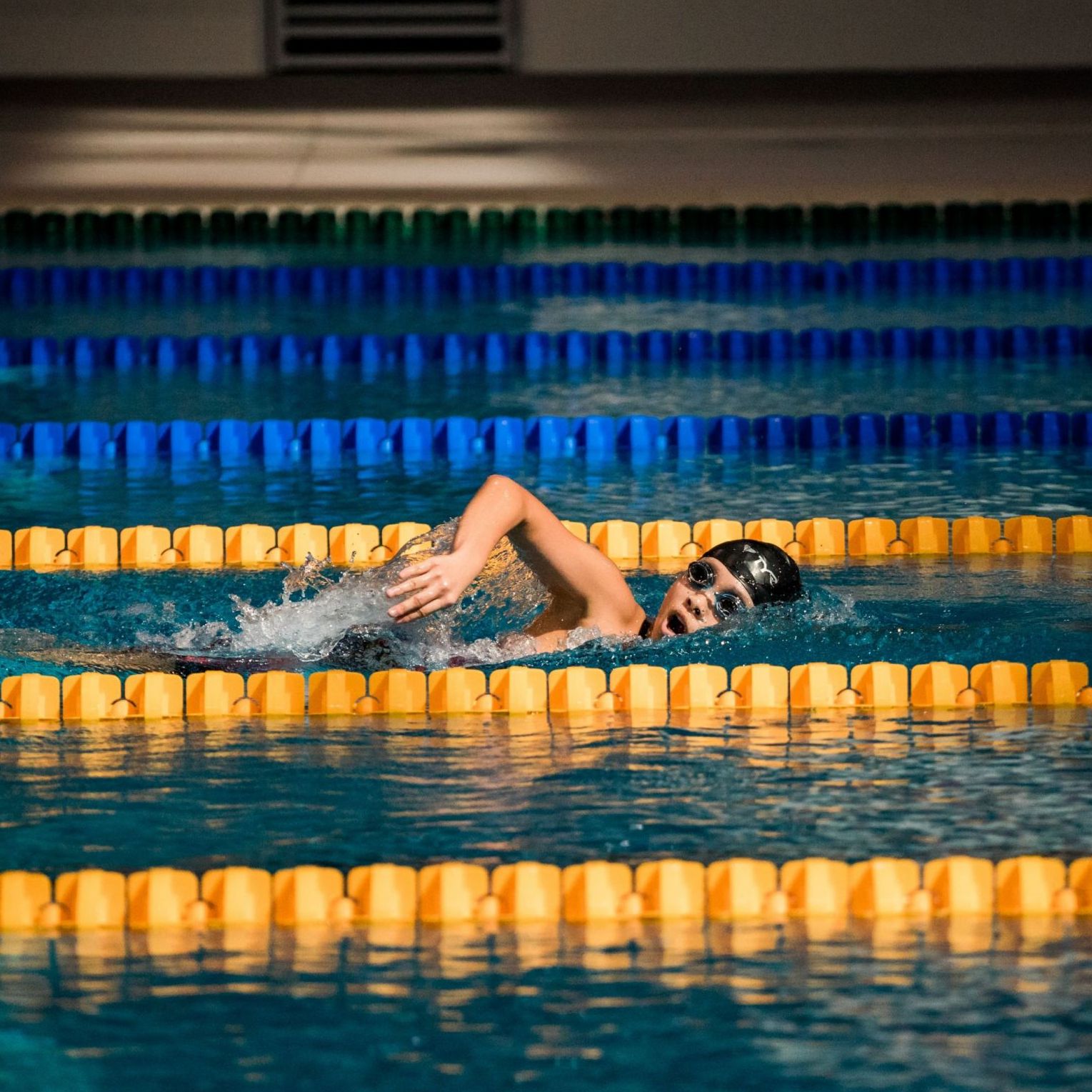Upgrade Your Exercise: Swimming for Fitness
March 19, 2021
Written by Morgan Segner, Aquatics Manager & Swim Instructor
Swimming has long been seen as one of the best full-body exercises and can strengthen almost all major muscle groups without the concern of injuries associated with high-impact workouts. It acts as a physical and neural exercise through breathing exercises and the use of sharpened focus. In this blog, we’ll review all of the positive roles learning to swim and swimming for fitness plays to your overall health.
Swimming as a Full Body Workout
Since swimming is a high endurance sport, it allows anyone choosing to swim for cardio purposes a way to burn off a great deal of calories. As a rule, swimmers burn around 3 calories/mile per total body weight. So a 220lb swimmer would burn around 660 calories/mile depending on the intensity. Swimming as a cardio workout compared to running is usually judged at a 4:1 ratio—this means that when you swim one mile you’re burning as many calories as a four mile run! You can also differ your swimming strokes and techniques to work and train different muscle groups.
Freestyle — works your arm muscles the most, mainly your biceps and triceps, as well as your calf muscles with the kick.
Breaststroke — works your glutes and quadriceps muscles with the kick, and your pectoral chest muscles.
Backstroke — engages the latissimus dorsi or lats, your lower back muscles, and the triceps.
Butterfly — tones and strengthens your shoulder and arm muscles, mostly your deltoids and triceps, and well as your upper back and neck muscles.
Whether an experienced or amateur swimmer, it is possible to work major muscle groups that you may not be able to work with other forms of cardio—all while burning tons of calories!
Low Impact
Swimming is often hailed as the go-to exercise for athletes and non-athletes looking to recover or rest from certain injuries without further aggravating or damaging those areas. The resistance of the water while exercising allows swimmers vigorous activity at a low impact to joints and most muscle groups. If you are looking for a workout when you’re concerned about joint pain, looking to reduce muscle fatigue, or relive stress on certain muscles, swimming is definitely a great choice.
Hypoxic Workouts and the Neural Benefits of Swimming
Hypoxic workouts are best explained as a vigorous activity with limited use of oxygen. When swimming, this is best practiced as going longer with more strokes with less breaths or no breaths until the other side of the pool is reached. Hypoxic workouts are quite easily achieved when swimming since normally your face is submerged in the water, and your body is performing one of the stroke techniques. Hypoxic workouts are seen by some researchers as a decent way of improving aerobic capacity, essentially training the body to use oxygen more efficiently when exercising, however it is not universally agreed upon. That aside hypoxic workouts have other benefits:
- Since you are breathing less, hypoxic workouts allow you to focus more on your stroke technique and address issues in form and allows for a more accurate movement patterns in the water.
- Better control in open water is another benefit of hypoxic workouts. This is beneficial when swimming in rougher waters like the ocean and a regular breathing pattern may not be reliable.
- Hypoxic workouts are a great way to warmup for a regular swim since they boost your heart rate without having to go a long distance or pushing yourself too hard. With your heart rate high, you can then do a regular swim while burning more calories.
When performed correctly and safely, hypoxic workouts can also help to improve focus in the water and are considered by some to be a form of aerobic meditation. There are many similarities between hypoxic workouts and popular breath control techniques that both help to reduce stress, improve focus, and improve energy levels for the day.
Swim Fitness
Though often seen as a very demanding exercise in terms of technique and form, swimming is a high-intensity aerobic exercise that can be performed by anyone with proper training. Swimming provides efficient forms of strength training, vigorous cardio, and low-impact/recovery workouts with the added benefits of higher energy levels and reduced stress if done properly. LaHaye Rec & Fit offers Swim Fitness and private swim classes for anyone interested in improving their technique or simply looking for a great cardio workout. So, if this interested you, get to a pool and start swimming!

